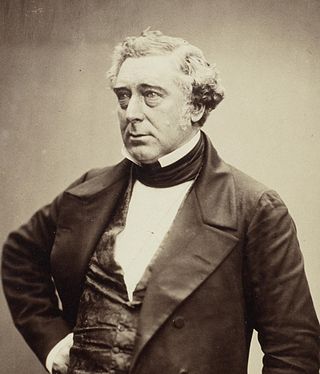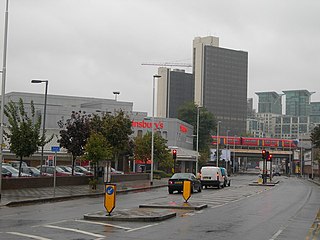Notable Projects
Buildings
The company built many notable buildings of which a good number survive today. These included ones designed by architects EW Mountford, Sir Reginald Blomfeld, Sir Herbert Baker, Sir Edwin Lutyens, Sir Giles Gilbert Scott, Sir Edward Maufe and Sir Basil Spence. The list below is far from comprehensive.
1889-90 Battersea public library and baths [14]
1891-4 Battersea Polytechnic [15]
1893-4 Streatham Pumping House. In the style of the day, built with domed and turreted neo-Byzantine pumping house and tall brick chimney stack in the form of a campanile. [16]
1897-1902 Chatham Royal Naval Barracks [2]
1897- Admiralty Building, Horse Guards Parade [17]
1899-1900 Millais Building (flats) Millbank [18]
1900-7 Central Criminal Court (Old Bailey) [17]
1901-3 London Wall office development
1904-05 Hanover House flats Regent's Park [18]
1904-9 Gorringes department store, Buckingham Palace Rd Westminster
1905 Rushton Hall, Northamptonshire, completely restored after fire. [19]
1905-6 United University Club, Pall Mall Westminster
1907-10 General Post Office (King Edward's Building), Giltspur St London. The first large reinforced concrete building in London. [20]
1908- Caxton House, Tothill St Westminster [21]
1910-1911 Whiteleys department store, Queensway Bayswater An example of a steel framed building which could be built much more cheaply and quickly than the traditional masonry construction used at Gorringes, demonstrating the revolution in building techniques at this period.
1912-17 Government Buildings, Storey's Gate Westminster
1914-15 Waldershare Park Tilmanstone Kent, completely restored after fire. [19]
1922-31 Westminster Bank, 51-52 Threadneedle St London
1924-5 County Fire Office, Piccadilly Circus
1924-7 Courtauld Building, 16 St Martin's-le-Grand
1924-42 Bank of England Threadneedle St London. Only the earlier screen wall (c1800) by John Soane survives on the south and west sides and that had to be underpinned. The project took so long because of its scale (much of it is underground) and the bank continued in operation on site during the work. Holloways was seen as well suited to contracts of this nature both because of its expertise in civil engineering and because as an integrated company it had its own stonemasonry, joinery and decorating divisions with a demonstrated ability to carry out work to the highest craft standards. [22]
1928-33 Glyn Mills and Martin's Bank buildings in Lombard Street
1929-32 Princess Beatrice Hospital Earls Court
1933 Empire Swimming Pool, Wembley now incorporated in Wembley Arena [23]
1933 Members' Stand at Lord's [24]
1933- Cumberland Hotel Marble Arch
1934 Peckham Health Centre. An innovative architectural and public health project.
1935-7 Kingston House Kensington Rd London SW7 [18]
1936-9 Westminster Hospital Marsham Street.
193(1)-39 Duveen gallery British Museum and North Library reconstruction (date of latter unclear)
1938-40 Roche Products Factory, Broadwater Rd Welwyn Garden City
1950- Serjeant's Inn rebuilding, Fleet Street
Post-war Holloways were responsible for large scale flat and domestic housing developments e.g. at Crawley New Town and Draycott Avenue Chelsea, Henry Dicken's Court Kensington and the Pimlico housing scheme (1st four blocks).
Civil engineering
With the acquisition of expertise in steel framing and reinforced concrete at the beginning of the 20th century civil engineering became an important aspect of the company's operations.
1906 covered reservoir at Hart Lane Luton, the company's first reinforced concrete project.
1907-12 new jetty at Western Dock, widening and deepening of Tobacco Dock, at London Docks
1907-13 sea defence works at Roedean, Rottingdean and Ramsgate
1914 power station for the Euston-Watford rail electrification scheme, leading to involvement in many rail infrastructure projects subsequently.
1920 500 ft graving dock and deep water quay at Seaton Snook, River Tees, and similar works in the 1920s and 1930s on the Thames, at Grimsby, Seahouses Hebburn and Jarrow
1935 Morgan Crucible chimney, Battersea. The chimney was 279 feet high and is of interest because it was necessary for the consulting engineers to develop a new form of shuttering to make moving form construction possible. The chimney tapered from a diameter of 13 feet, 11 inches at the base to 9 feet 3 inches at the top, and the wall thickness reduced from 15 inches to 6 inches. The upper 266 feet took 44 days to build.
1937 Littlebrook A power station, Dartford.
1940 oil discharging jetty at Avonmouth
1945- Catalagzi power Station, Turkey. The contract had been let in 1940 but construction was delayed by the Second World War
1946-52 Bagdhad Railway Station
1947 new deep water quay and Millennium flour mill at Royal Victoria Dock, London. Similar project at Caledonia Mills Leith.
1948 new quay wall and jetty at Nine Elms
1950 oil loading jetties at Al-Faw, Shatt al-Arab, Iraq, followed by two more similar projects there.
1950-4 Smith's Dry dock and deepwater quay at North Shields [25]
1953-5 quays at Tilbury Docks followed by Beckton Quay and Erith Jetty, all on the Thames.
Post-war, power station construction was carried out at Littlebrook (extensions), Brighton, Freemans Meadow Leicester, Uskmouth pump house (a major undertaking because of its location with an extreme tidal range, weighing 42,000 tons when complete), Tilbury and Dalmarnock.
The company is also reported to have carried out work in Australia
Bridges
1914 Esk Bridge Gretna, replacing one built by Thomas Telford in 1820. [26]
1922-6 Bridge over the Thames at Reading. At the time, the longest single span reinforced concrete bridge in the UK. [27]
1924-8 Royal Tweed Bridge at Berwick-upon-Tweed [17]
1930-3 Hampton Court Bridge [28]
1934-7 Chelsea Bridge The first self-anchored suspension bridge in the country and the first steel bridge built by Holloways. [29]

1936-7 Towy Bridge at Carmarthen
1936- King Ghazi and King Faisal Bridges across the Tigris at Bagdhad [28]
1936-40 Wandsworth Bridge [30]
1939- Bahrain swing bridge [28]
1945-50 Baghdad combined road-rail bridge across the Tigris
1956-8 bridge over the Diyala River at Baqubah Iraq
Restoration of historic buildings, memorials and similar projects
Although heavily engaged in large scale construction and civil engineering work the firm was proud of its retention of craft skills.
Work on churches included restoration and expansion of Hexham Abbey including a new nave and restoration of the choir screen and stalls, the building of a new chapel at Ampleforth Abbey (1922-5) and in 1926-30 the 9th Church of Christ, Scientist, Marsham Street Westminster.
There was a considerable demand for memorials and similar enterprises after both the First and Second World Wars. Of note are the Memorial Cloisters at Winchester College (1924), Harrow School memorial, Marlborough College Memorial Hall (1925), the Arch of Remembrance in Victoria Park, Leicester (1925), King George V Memorial Fountain [31] Windsor (1937), the Trafalgar Square reconstruction (completed 1948), the Air Forces Memorial Runnymede (1953), and the Magna Carta Memorial, Runnymede (1957).
The firm worked on many historic buildings including the restoration of war damage. They included the Merchant Taylors' Hall, London, College Building, Westminster School, White Lodge, Richmond Park, Cumberland Terrace, Regent's Park and the Inner Temple London.
World Wars
Although there were contracts to be completed, normal operations were severely affected by the recruitment of men to the armed forces and the government direction of labour, and new work was mainly or wholly devoted to the needs of war.
First World War
The firm completed numerous war contracts including camps, factories and ordnance sheds at Purfleet, Didcot and Langwith Derbyshire and a hospital at Étaples in France. The company also built numerous houses for war workers at Rosyth, Roe Green Village, Kingsbury and Cardington, Bedfordshire. The most famous incident concerns the chairman, Henry Holloway, himself. He was approached by David Lloyd George, when Minister of Munitions, for help in providing housing for the workers at the new war factories throughout the country. Henry Holloway, and his foreman Mr Gathercole, toured the country arranging the work with local builders and architects, achieving the target of providing the necessary housing within six months. Henry Holloway was knighted for his services in 1917.
Second World War
The war brought numerous contracts for the building of new camps, ordnance depots, Royal Air Force stations, hospitals and the like. The largest single contract was for the building of an ordnance factory at ROF Kirkby on which 15,000 men were employed at the peak of construction and the factory was able to commence operation in ten and a half months though the complete project took almost two years. Later in the war the firm responded to the urgent need to expand domestic coal production by engaging in open cast mining for which they were well fitted by their experience with heavy earth moving equipment. The first such mine was in the Dukeries area of Nottinghamshire in 1942, and the firm rapidly expanded its operations there and in the Newcastle area, for example at Whitley Bay.
Holloways were contracted to build a series of sea forts for the defence of the Thames estuary, and these were built in reinforced concrete and steel in dock basins and berths at Gravesend. They were of two distinct types, four naval forts in reinforced concrete and three army forts each consisting of seven interlinked sections. When complete, they were towed out and sunk in position. This work then led to two more novel wartime activities. One was the building of small reinforced concrete floating docks for the repair of small vessels, in particular landing craft. They were designed by Guy Maunsell, who had also designed the sea forts, and the first three 400 ton units were ordered in August 1943. They consisted of slabs cast flat and placed upright when hardened, then the horizontal base was cast and the joins sealed with concrete. Fourteen were eventually constructed at Gravesend and elsewhere, and a number more were on order to be built in various locations including India when the war finished. [32] They could be built in as little as nine weeks and two, AFD 37 and 50, were deployed at Arromanches after D-Day.
Also stemming from experience with the sea forts was the company's involvement in the development of the Mulberry harbour units. [33] In October 1942 Holloways were commissioned to build three units on the Hippo design of Hugh Iorys Hughes on shore at Conwy Morfa, no suitable dry dock being available. This was a considerable challenge because the largest unit, the pierhead, consisted of a reinforced concrete pontoon 203 feet long, with a beam of 45 feet and depth of 24 feet, on which was mounted a steel superstructure 62 feet high and itself weighing 350 tons. The total weight of the unit was 3,200 tons and had to be side launched. The solution was to build the unit on keel blocks and when complete transfer the weight to the launching cradle which ran over a curved ramp which increased in gradient from one in 16 to one in six. Although the Hippo design itself was not adopted the build and launching technique was widely used for other Mulberry units.
















